2025 Can-Am Maverick X3 Buyer’s Guide
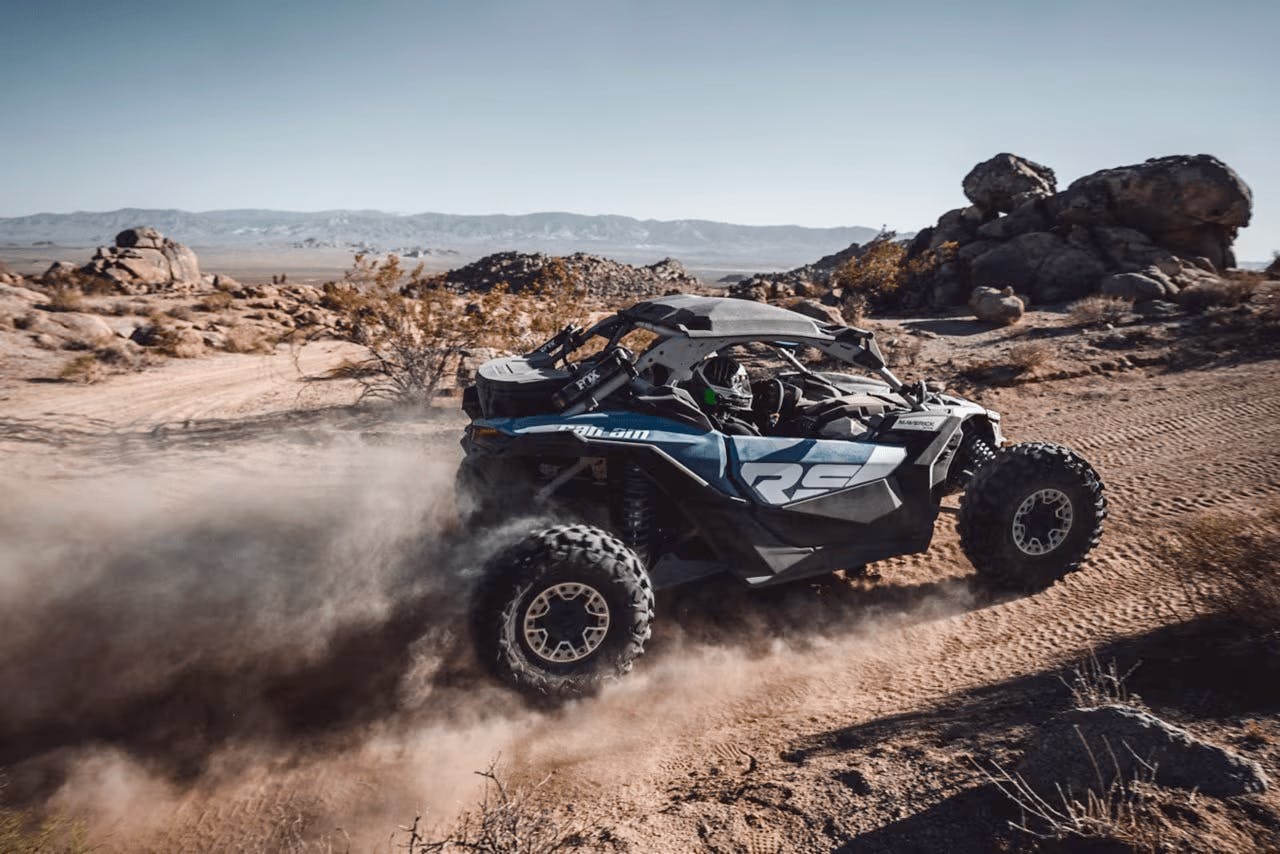
$21,999 MSRP / 135 HP
• sporty, canadian, and fast
• If Rzr = coke, then Mav x3 = pepsi
• a trim for every riding style
The yin to the RZR’s yang.
The old line about buying a new car says that every customer knows what they want—even if they don’t actually know what they want. The same is true with side-by-sides. If you’re buying a new sport rig and you want a Can-Am, for example, you probably know that before you walk in the dealer’s door.
And chances are, if you want a new Can-Am, you want an X3.
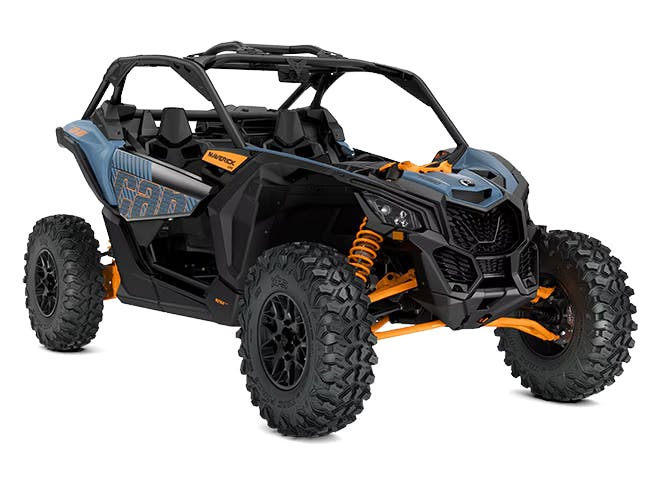
The X3 is the mainstay of Can-Am’s lineup, launched for the 2021 model year and one of the brand’s best-sellers since. It goes head-to-head with the Polaris RZR almost trim-by-trim.
The difference between the two lies in focus and detail. Where the RZR can feel more approachable and upright, the X3 gives a more serious, ground-hugging vibe. The Can-Am feels cheaper in some ways and more expensive than others, but in the end, it’s a fine alternative in its own right.
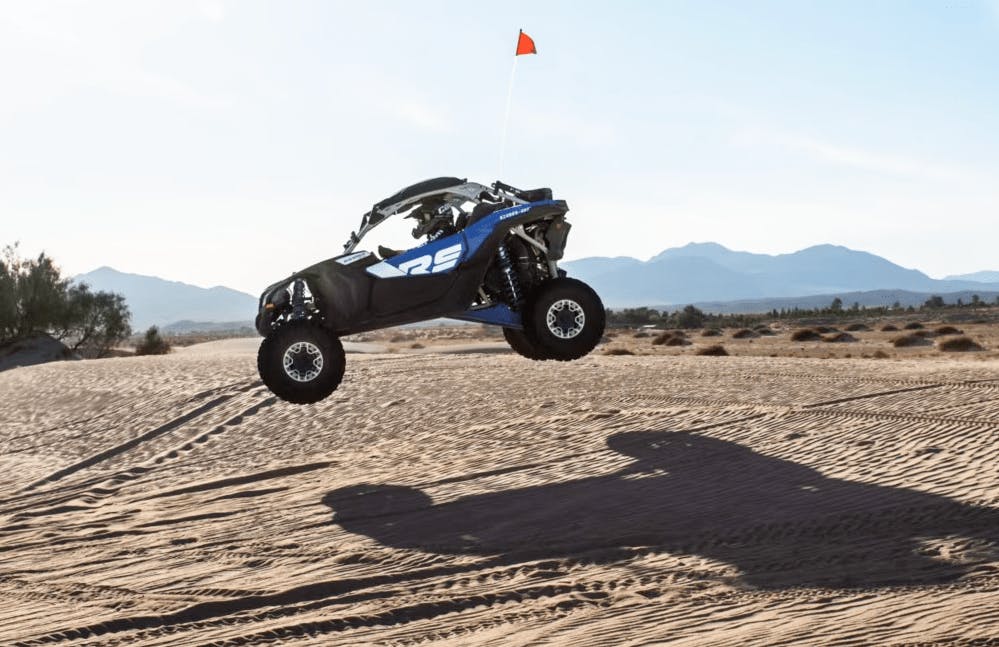
How much power does it make?
The Maverick X3 line is vast. All told, Can-Am offers 12 separate X3 models, each noticeably different from the rest. That said, the entire range uses one of just two engines.
Those two powerplants feature the same foundation: the 900-cc Rotax ACE (“Advanced Combustion Efficiency”) three-cylinder, plus a turbocharger. In base form, as in the entry-level Maverick X3 DS Turbo, the ACE produces 135 hp. That engine and power output also appears in the X3 X DS Turbo RR, the X3 RS Turbo, and the X3 X RS Turbo RR. All other Can-Am Maverick X3 models feature a 200-hp version of the same basic engine.
With the 200-horse package, the extra power comes mainly through extra turbocharger boost and tuning. These are fun, thrummy little engines, with Porsche-like exhaust sound and, in some trims, a hefty dose of turbo whistles and fizzes. Regardless of which output you choose, you get an engine with excellent torque and a snappily tuned CVT automatic.
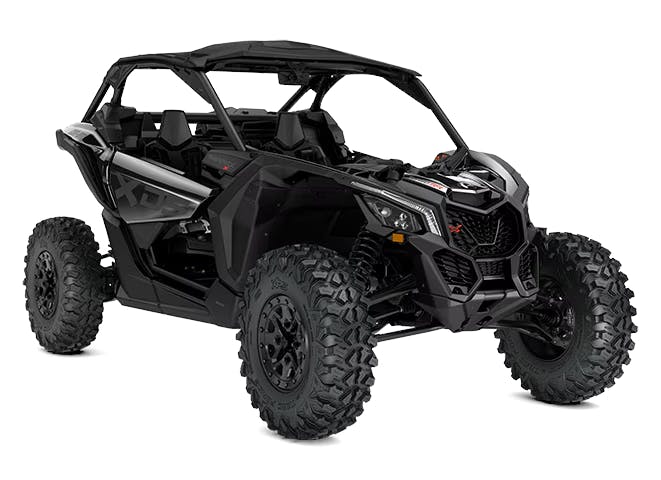
What makes it special?
Every version of the Maverick X3 feels like it was built to run. These are sport-focused machines, no doubt. Spring and shock tuning are focused toward hustle. Compared to something like a Polaris RZR, the seating position is lower and more reclined. Even the smaller and more narrow X3 models feel large, stable, and substantial.
That feeling isn’t for everyone. But this is the brand that brought you the fabulous (we utterly love it) and industry-changing Can-Am Maverick R. The X3 is by no means as serious a weapon as the Mav R, but it’s genuinely not far off. Fancy golf cart, this ain’t.
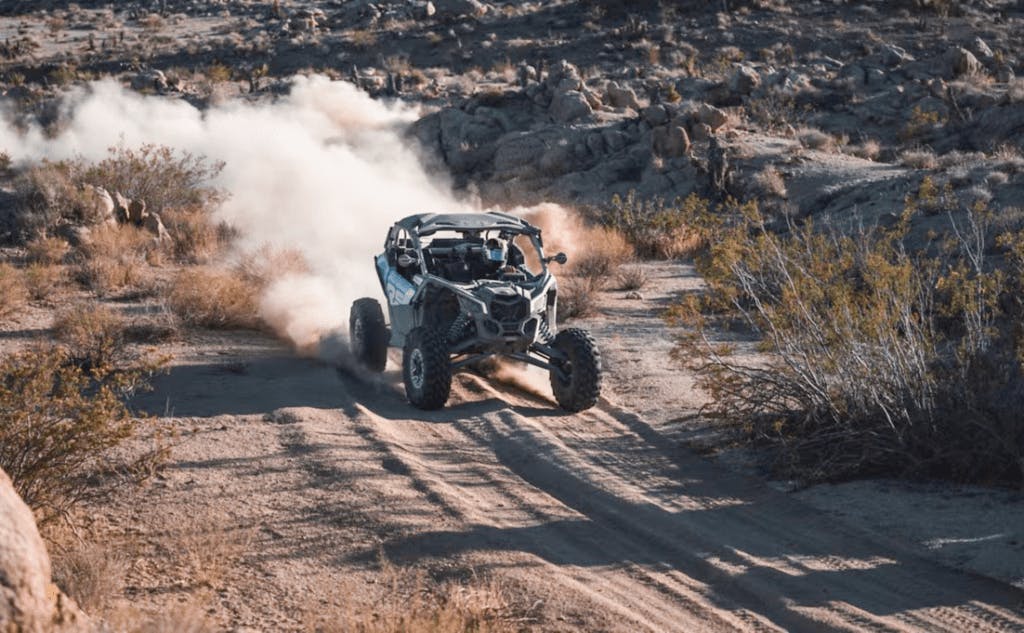
Why do I want it?
You think most side-by-sides feel like golf-cart barstools, and you want one that vibes more like a rally car. (Or a dirt bike.) The last Polaris RZR you tried reminded you too much of an overgrown snowmobile. You’re a sucker for a good model name, and you watch a Top Gun movie every night of the week.
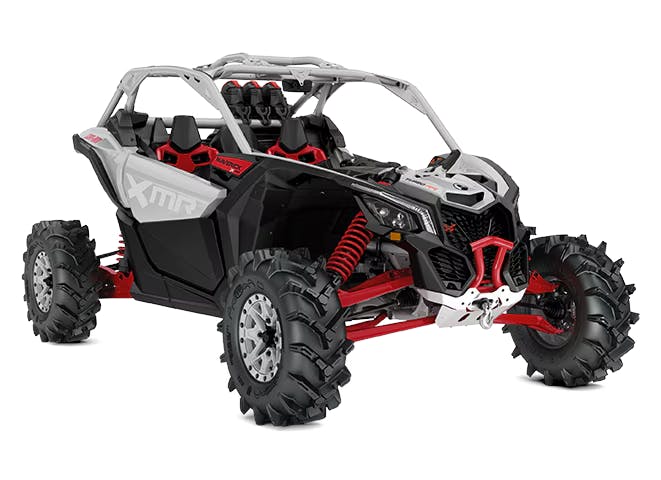
Why don’t I want it?
Model age: The side-by-side industry moves fast. Launched for the 2021 model year, when it felt bang-up-to-date, the current X3 is not a new machine. An experienced eye or driver will notice the platform’s age under the skin, but most people will focus on the X3’s dated interior. The cabin simply feels old in both style and finish, with low-cost touchpoints, plastic flashing, and fat panel gaps.
The level of finish here was excellent four years ago, but progress in the rest of the business has left the X3’s detail work subpar for a machine that can cost upwards of $40,000 in 2025.
Seating position: Again, all Maverick X3 models sit driver and passenger relatively low in the cabin. The arrangement has several benefits—namely in performance and handling—but it also brings a substantial drawback: X3s are noticeably harder to see out of than most sport rigs, especially for drivers under five-foot-ten. If you’re strapped in tight, compressed down into the seat cushion, plotting a line at speed or placing the rig’s wheels on a trail can be difficult.
Polaris bias: If you’re buying a pickup in America, most people start the process with one question—”Ford or Chevy?” If you’re buying a side-by-side, it’s “Polaris or Can-Am?” And at the end of the day, one is not the other. The Polaris RZR and the Can-Am Maverick are both fruit, but they’re apples and oranges. If you like one, you don’t need to be told why—and no one will convince you to try the other.
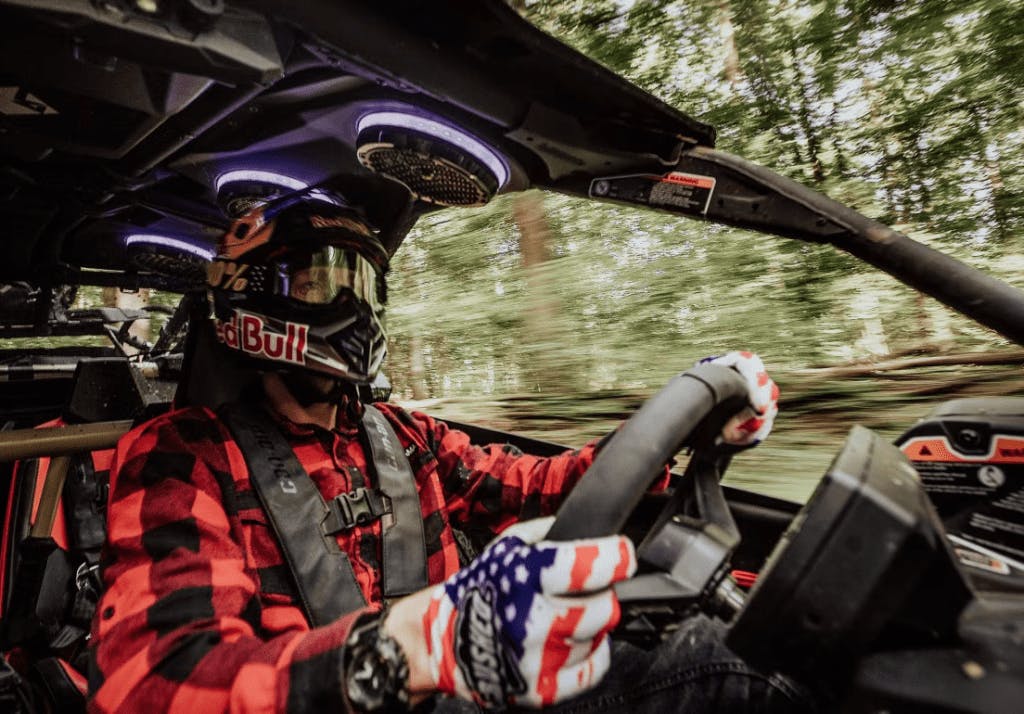
Which trim do I want?
Trim differences matter here. With the X3, model variants bring different wheel and tire packages, different clutch tuning, different suspension tuning, even different frame geometries.
Yes, Can-Am model names are alphabet soup. That said, once you learn the basic thinking behind those names—how Can-Am separates and prices Maverick X3 variants by trim and intended riding style—the absurd naming structure begins to make sense.
Our advice? Don’t bother learning what the names mean. If you’re thinking about picking up an X3, you really only need to know a few things: “DS” variants are generally less expensive, less sporty, and narrower than “RS” models. “RR” models are generally even more sporty than that. If you want a mud rig, get an X3 with “MR” (“Mud Ready”) in the name. RC models are meant for rock crawling. And, last but not least, if there’s a number in the name, like 64 or 72, that represents the machine’s width.
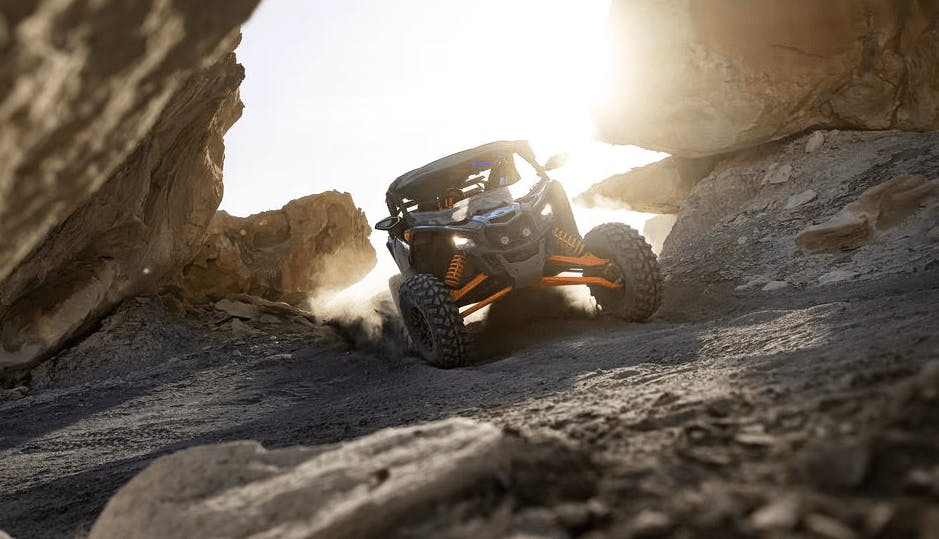
Naturally, those rules have exceptions. They are very annoying exceptions, but thankfully, they’re not that important in the grand scheme. Especially since most people simply do what they do with cars, which is, waltz into their nearest dealer and buy the most machine they can afford.
That’s not a terrible idea, and it usually works out alright. The X3 is a remarkably versatile rig, adaptable for most types of riding. As long as you don’t buy, say, an MR and expect it to be perfect for 90-mph desert runs, you’ll be okay.
For what it’s worth, we like the DS Turbo RR ($30,299) as a good all-rounder. RS models and things like the X3 X Turbo RR are best for wide-open land and the American West. But again, your mileage may vary.

If I like this… what else should I look at?
Check out the Honda Talon 1000, the Polaris RZR XP 1000, and the Kawasaki KRX 1000.
2025 Can-Am Maverick X3 Specs
NOTE: Four-door versions of the Can-Am Maverick X3 are sold as the X3 Max.This buyer’s guide refers only to the two-door version.
Length: 132 in. (DS Turbo, DS Turbo RR, X DS Turbo, X DS Turbo RR, RS Turbo RR, X RS Turbo, X RS Turbo RR) / 132.3 in. (X RC Turbo RR 72) / 133 in. (X RC Turbo RR 64, X MR 64) / 134.5 in. (X3 X RC Turbo RR 72)
Width: 64 in. (DS Turbo, DS Turbo RR, X DS Turbo, X DS Turbo RR) / 65 in. (X RC Turbo RR 64) / 66.7 in. (X MR 64) / 72.4 in. (X MR 72, X RS Turbo RR) / 72.7 in. (RS Turbo RR) / 72.8 in. (X RC Turbo RR 72)
Height: 65.4 in. (DS Turbo, DS Turbo RR) / 65.7 in. (X DS Turbo, X DS Turbo RR) / 66 in. (X RS Turbo RR 64) / (68.5 in. (RS Turbo, RS Turbo RR 72, X RS Turbo RR 72)
Wheelbase: 102 in.
Claimed Curb Weight: 1546 in. (DS Turbo, DS Turbo RR) / 1554 lb. (X DS Turbo, X DS Turbo RR) / 1673 lb. (RS Turbo, RS Turbo RR) / 1699 lb. (X RS Turbo RR) / 1674 lb. (X RS Turbo RR 64) / 1843 lb. (X RS Turbo RR 72)
Engine: Turbocharged Rotax inline-three
Displacement: 900 cc
Transmission: pDrive primary CVT and Quick Response System X (QRS-X) CVT w/ high, low, reverse, park
Claimed Power: 135 hp (DS Turbo, X DS Turbo RR, RS Turbo, X RS Turbo RR) / 200 hp (DS Turbo RR, X DS Turbo RR Smart-Shox, RS Turbo RR, X RS Turbo RR Smart-Shox, X RC Turbo RR 64, X RC Turbo RR 72, X MR Turbo RR 64, X MR Turbo RR 72)
Claimed Torque: N/A
Fuel System: EFI
Steering: High-torque, tri-mode Dynamic Power Steering (DPS)
Drivetrain: Lockable front differential w/ Smart-Lok, True 2WD/4WD w/ front diff lock, 4WD Trail Activ, 4WD Trail (DS Turbo, DS Turbo RR, X DS Turbo, X DS Turbo RR, RS Turbo, RS Turbo RR); 2WD/4WD w/ front diff lock/4WD Rock/4WD Trail w/ Smart-Lok (X RC Turbo RR); 2WD/4WD w/ front diff lock/4WD Mud/4WD Trail (X MR 64, X MR 72)
Front Suspension: Dual A-arms w/ external sway bar. Showa HPG Piggyback 2.5 shocks, 20 in. travel (DS Turbo, DS Turbo RR, RS Turbo); Showa HPG Piggyback 2.5 shocks, 22 in. travel (RS Turbo RR; Fox 2.5 Podium RC2 piggyback w/ bypass, 20 in. travel (X DS Turbo RR); Fox 2.5 Podium RC2 piggyback w/bypass and Smart-Shox technology, 20 in. travel (Smart-Shox models except X RS Turbo RR); Fox 2.5 Podium piggyback w/bypass and Smart-Shox technology (X RS Turbo RR Smart-Shox), 22 in. travel; Fox 2.5 Podium piggyback w/ QS2, 18.0 in. travel (X RC Turbo RR 64); Fox 2.5 Podium piggyback w/ RC2, 22 in. travel (X RC Turbo RR 72)
Rear Suspension: Torsional trailing arm w/ external sway bar. Showa HPG Piggyback 2.5 shocks, 20 in. travel (DS Turbo, DS Turbo RR, RS Turbo); Showa HPG Piggyback 2.5 shocks, 22 in. travel (RS Turbo RR); Fox 2.5 Podium RC piggyback shocks, 20 in. travel (X DS Turbo RR); Fox 3.0 Podium piggyback w/ bypass and Smart-Shox technology, 20 in. travel (Smart-Shox models except X RS Turbo RR); Fox 3.0 Podium piggyback w/ bypass and Smart-Shox technology, 24 in. travel (X RS Turbo RR Smart-Shox); Fox 2.5 Podium piggyback w/ QS3, 18 in. travel (X RC Turbo RR 64); Fox 3.0 Podium remote-reservoir w/ RC2, 24 in. travel (X RC Turbo RR 72); Fox 2.5 Podium piggyback w/ QS3, 20 in. travel (X MR 64), 22 in. travel (X MR 72)
Front Brakes: 262-mm hydraulic discs w/ 2-piston calipers
Rear Brakes: 248-mm hydraulic discs w/1-piston calipers
Wheels F/R: Cast aluminum; 14 in. (all models except X MR 72, X RS Turbo RR Smart-Shox, X RC Turbo RR 72); cast aluminum beadlock 14 in. (X MR 72); cast aluminum beadlock, 15 in. (X RS Turbo RR Smart-Shox, X RC Turbo RR 72)
Tires F/R: XPS Trac Force, 30×10 (DS Turbo, DS Turbo RR, X DS Turbo, X DS Turbo RR Smart-Shox, RS Turbo, RS Turbo RR); XPS Trac Force, 32×10 (X RS Turbo RR Smart-Shox); Maxxis Liberty, 30×10 (X RC Turbo RR 64); Maxxis Liberty, 32×10 (X RC Turbo RR 72); ITP Cryptid, 30×9/30×11 (X MR)
Front/Rear Rack Capacity: 200 lb.
Towing Capacity: N/A
Seating Capacity: 2
Ground Clearance: 14 in. (DS Turbo RR, X DS Turbo RR, X RC Turbo RR 64, X MR 64) / 16 in. (RS Turbo, RS Turbo RR, X RS Turbo RR Smart-Shox, X RC Turbo RR 72, X MR 72)
Fuel Capacity: 10.5 gal.
